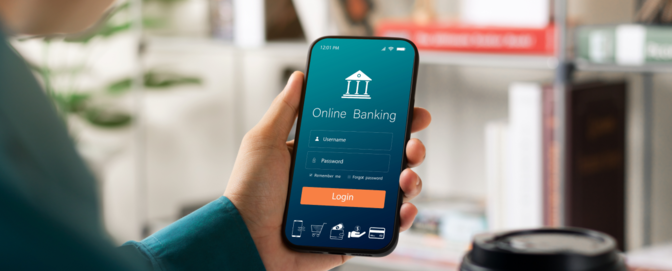
How to improve UX with continuous discovery

95% of new products fail, according to the late Harvard Business School professor Clayton Christensen. There are a variety of reasons. Perhaps the new product couldn’t oust a longtime customer favorite. Maybe the new product was too hard to use and everyone gave up. Or, despite being a superior product, its marketing and go-to-market failed to compel consumers.
Whatever the case, it’s critical to keep users at the forefront of product development, which minimizes the risk of potential failures in your product. Continuous product discovery from discovery to post-launch will ensure user satisfaction while meeting business needs.
What is continuous product discovery?
Continuous product discovery aims to shift research into a customer-driven process where product design teams work with customers to co-create their products. Product teams will do smaller and more frequent user research to remain on trend with their customers.
Teresa Torres, an internationally acclaimed author, speaker, and product discovery coach, credited the term continuous product discovery— authoring the book Continuous Discovery Habits: Discover Products That Create Customer Value and Business Value. In this book, she discusses why product teams should implement continuous discovery research with their customers to ensure a successful outcome.
How to implement continuous discovery?
To create an effective product, you need to understand your target customer and their needs and pain points. Torres says, “The goal of modern product discovery is to learn fast—to learn if our proposed solution will work.” This is critical and eliminates any guesswork related to whether or not your customer will value your product.
To prioritize solutions, consider implementing an opportunity solution tree. To implement continuous discovery, recruit customers with diverse perspectives to receive feedback about the product you’re designing.
Recruiting customers for feedback
You may think it’s difficult finding customers to partake in your user research and gain feedback. A way to combat this is by partnering with sales, customer service, or customer-facing teams.
Another method is to make it an in-app feature! After a customer completes a task on your app, consider creating a pop-up message inviting them to take a survey. Other ideas include organizing a focus group, welcoming reviews or comments through digital channels, or sending out a follow-up email.
And here at UserTesting, customer feedback is the core of what we offer, thanks to our Human Insight Platform, where you can pick from unmoderated testing or Live Conversations.
After your user research, you should have relevant feedback to help your product design teams. Take it a step further and implement an opportunity solution tree to garner ideas and solutions that’ll continue to serve your customers.
Opportunity solution trees
Designed by Teresa Torres, opportunity solution trees facilitate the product discovery process, providing teams with a representation of the best plan to achieve their desired outcome. To eliminate possible drawbacks, you’ll map out any opportunities and the best course of action to accomplish them. Similar to the branches of a tree, opportunity solution trees should be separated into four sections, recommends Torres. These sections are outcomes, opportunities, solutions, and experiments, which provide product design teams with a visual aid to map their processes.
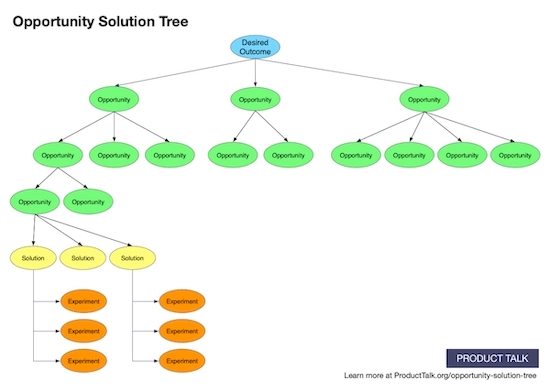
Section 1: outcomes
The first section is about the outcome you wish to achieve. Define what success looks like for your product, then lay out the rest of your tree from there.
Section 2: opportunities
After understanding your desired outcome, your team can better identify ways to achieve this. Generate opportunities after gathering feedback from your customers about their needs and frustrations.
Ask yourself (or your team):
- What could you produce that’ll be helpful to your customers?
- What do customers need that they’re not getting from you or your competitors?
Section 3: solutions
All ideas matter! No matter how simple or complex your solution may seem, if it connects to an opportunity, it could be helpful. All solutions should connect to an opportunity on the tree. Generate multiple solutions that connect with one opportunity on the tree. If the solution is feasible and addresses the opportunity, it’s useful. If a solution doesn’t connect to an opportunity now, consider saving it as it may be helpful in the future, or for other opportunities your team creates.
Section 4: experiments
In the final section of the tree, your team will evaluate and grow your solutions through experimentation. Conduct remote usability testing to understand different solutions to see where there’s room for improvement and what works. This step is critical to ensure you design the right product to fit your customers’ needs.
However, don’t test every solution! Test the underlying assumptions behind your solutions. Behind every solution, there are three assumptions you should test for—is it desirable, is it viable, and is it feasible?
- Desirable—do users want the product?
- Viable—is the product economically viable?
- Feasible—can we build the product?
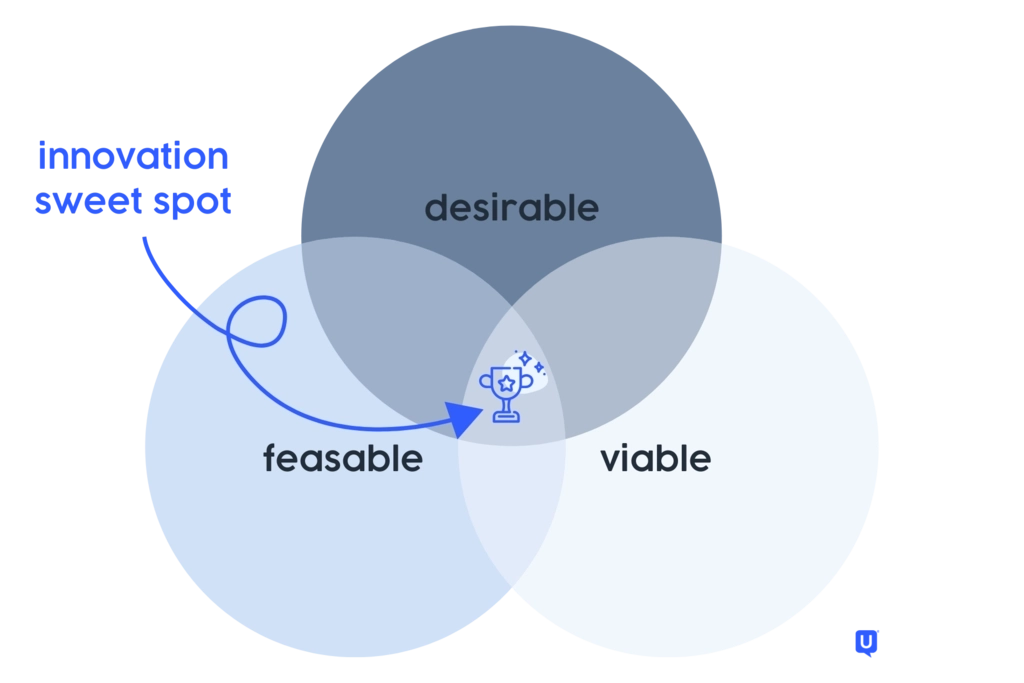
How does continuous discovery help UX?
The goal of continuous discovery is to consistently conduct user research to gain insight into your customers’ needs and desires. Remain in a continual state of learning because your customers’ behaviors and expectations evolve in ways you can’t always predict. By frequently gathering user feedback, you stay ahead of the game—and your competition—and can adapt quickly to upcoming challenges when designing a product.
Deepen customer insights
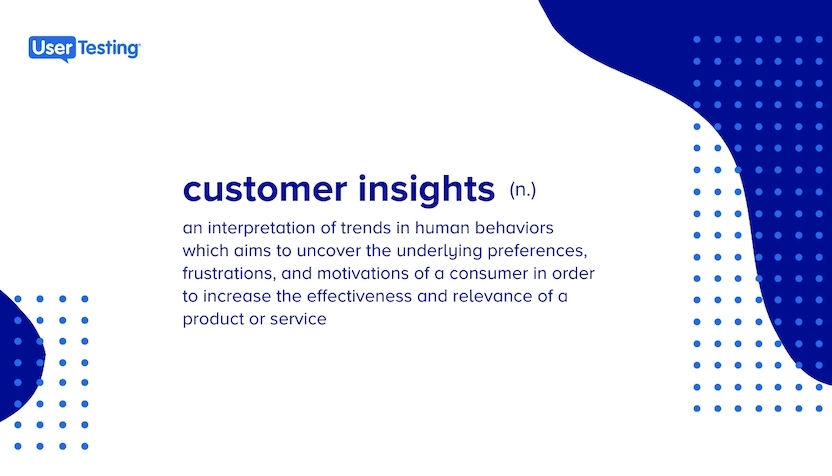
Users’ needs evolve constantly. People may realize that what they wanted originally, isn’t right for them at this current moment. Their needs could change, and you could end up designing a product that isn’t useful to your customers. When you constantly research your users, you’re aware of changing mindsets—giving you the opportunity to recognize a shift in your users' needs and make the correct decisions to adapt to them. Conducting research from product discovery to post-launch is how you’ll gain valuable long-term customer insights.
When you do continuous user research, you’re constantly gaining knowledge into what’s troubling your users and what’s working for them. Thus, you’re able to make decisions using relevant data from your discovery research.
Continuous product discovery drives customer-centric decisions
Implementing continuous product discovery is a critical asset you should use during each phase of the product development cycle. This allows you to help your organization bring customer-centered digital experiences to life with less risk and time, fewer resources—and a deeper understanding of your prospective and current customers.
Despite significant investment in digital tools and platforms, many organizations still struggle to meet evolving customer expectations. This persistent disconnect—known as the experience gap—arises from common issues such as a lack of timely customer feedback, internal misalignment, and a fundamental misunderstanding of user needs. While 87% of companies believe they deliver exceptional customer experiences, only 11% of customers agree. In today’s competitive landscape, closing this gap is essential—especially as companies that lead in customer experience grow their value at five times the rate of their peers.
Continuous discovery guarantees more confidence within teams. When you continually interact with your customers, you know their expectations—and can work to meet them. Conducting experiments and doing user research is critical to bridging the experience gap. Lead with empathy (with the help of UserTesting) and pave the way to understanding your customers, ensuring customer satisfaction and a well-designed product.
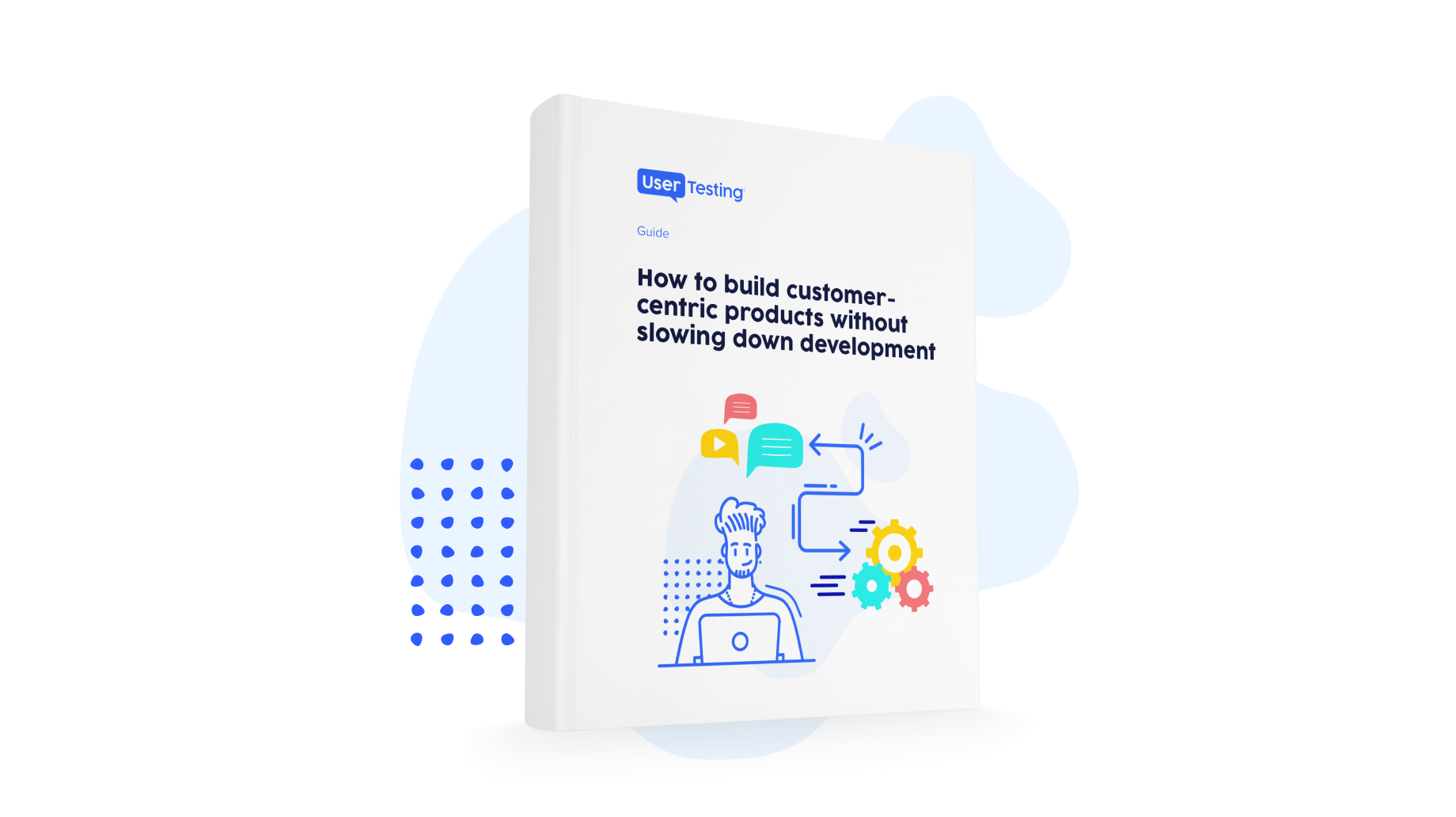
Build better products faster with user feedback
Discover how to implement customer-centric product development without sacrificing speed.


